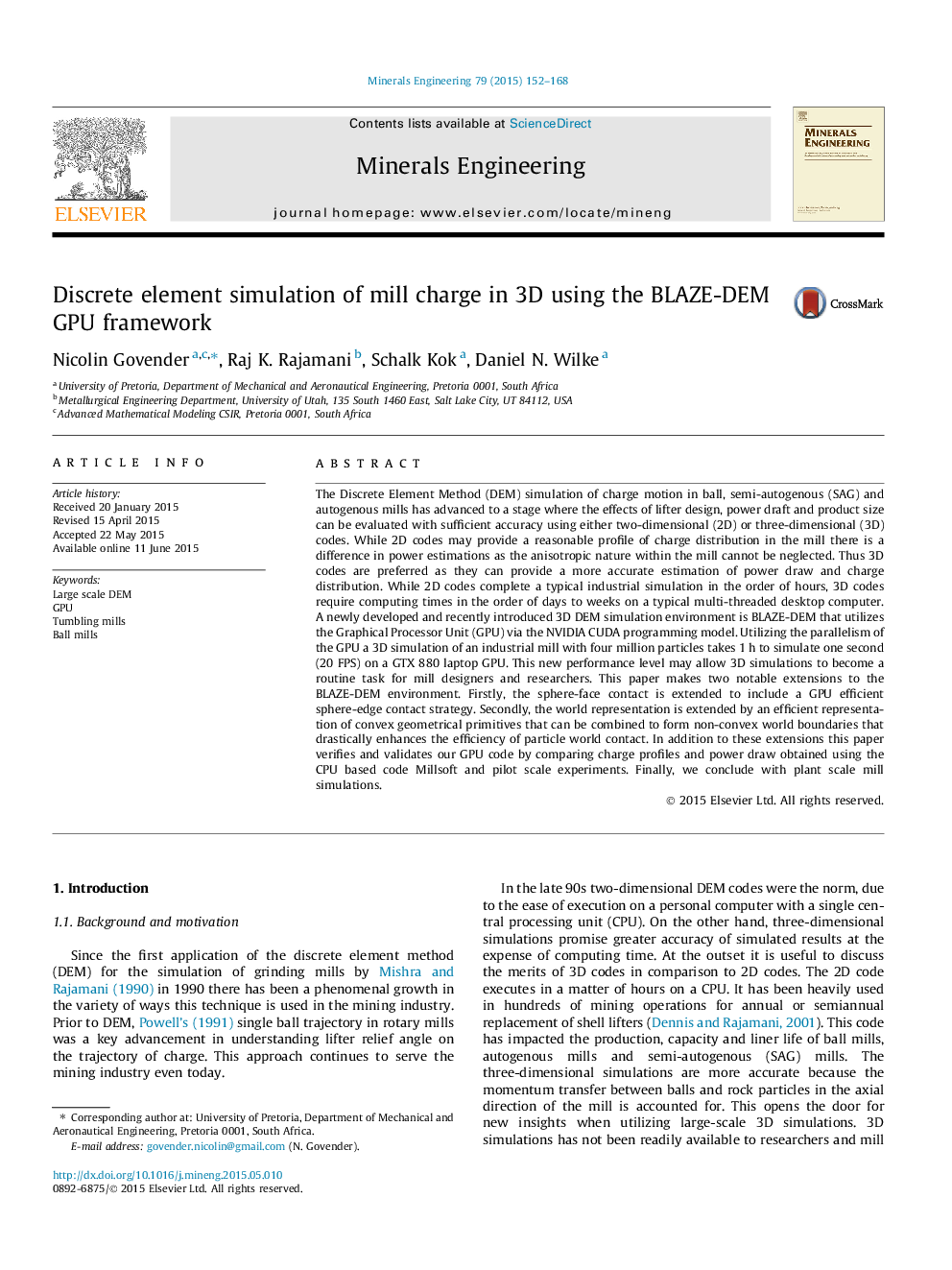| کد مقاله | کد نشریه | سال انتشار | مقاله انگلیسی | نسخه تمام متن |
|---|---|---|---|---|
| 232946 | 465314 | 2015 | 17 صفحه PDF | دانلود رایگان |

• This paper introduces a large scale Discrete Element Method (DEM) Graphical Processor Unit (GPU) code.
• The GPU improves efficiency predictions and reduces simulation times for large scale DEM simulations.
• Insights gained from computational simulations can improve the efficiency of tumbling mills.
The Discrete Element Method (DEM) simulation of charge motion in ball, semi-autogenous (SAG) and autogenous mills has advanced to a stage where the effects of lifter design, power draft and product size can be evaluated with sufficient accuracy using either two-dimensional (2D) or three-dimensional (3D) codes. While 2D codes may provide a reasonable profile of charge distribution in the mill there is a difference in power estimations as the anisotropic nature within the mill cannot be neglected. Thus 3D codes are preferred as they can provide a more accurate estimation of power draw and charge distribution. While 2D codes complete a typical industrial simulation in the order of hours, 3D codes require computing times in the order of days to weeks on a typical multi-threaded desktop computer. A newly developed and recently introduced 3D DEM simulation environment is BLAZE-DEM that utilizes the Graphical Processor Unit (GPU) via the NVIDIA CUDA programming model. Utilizing the parallelism of the GPU a 3D simulation of an industrial mill with four million particles takes 1 h to simulate one second (20 FPS) on a GTX 880 laptop GPU. This new performance level may allow 3D simulations to become a routine task for mill designers and researchers. This paper makes two notable extensions to the BLAZE-DEM environment. Firstly, the sphere-face contact is extended to include a GPU efficient sphere-edge contact strategy. Secondly, the world representation is extended by an efficient representation of convex geometrical primitives that can be combined to form non-convex world boundaries that drastically enhances the efficiency of particle world contact. In addition to these extensions this paper verifies and validates our GPU code by comparing charge profiles and power draw obtained using the CPU based code Millsoft and pilot scale experiments. Finally, we conclude with plant scale mill simulations.
Journal: Minerals Engineering - Volume 79, August 2015, Pages 152–168